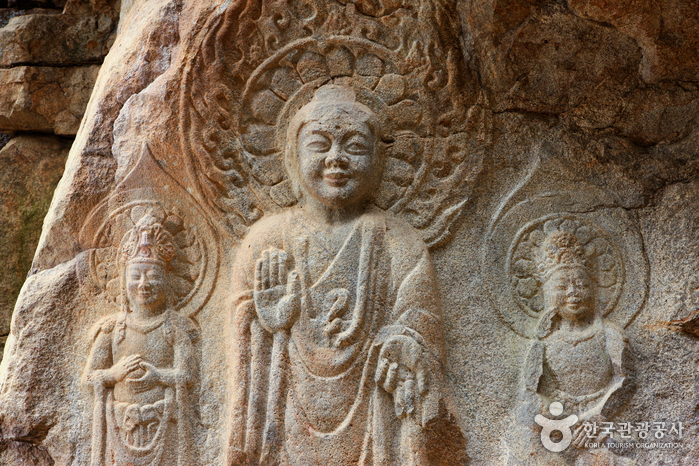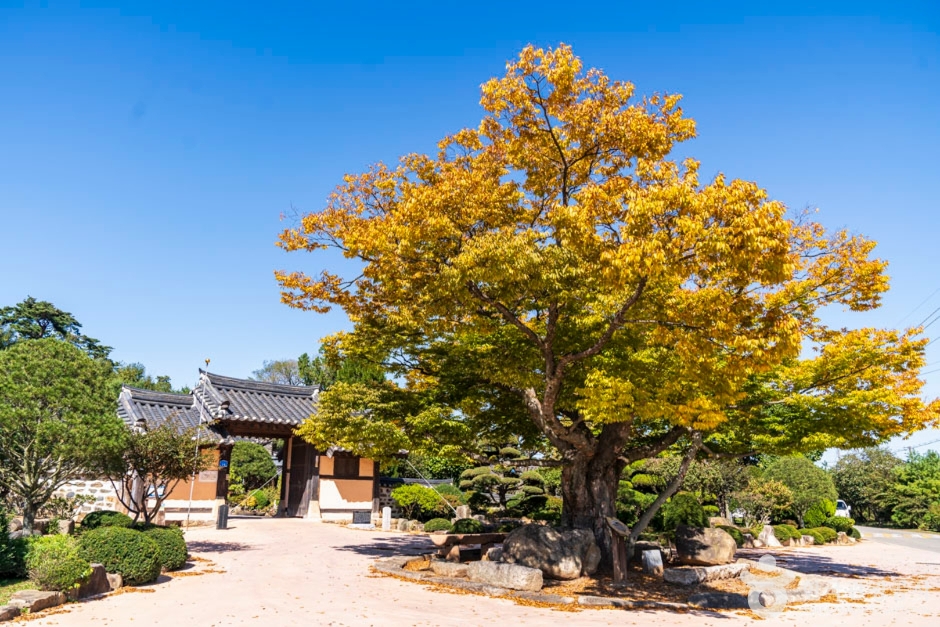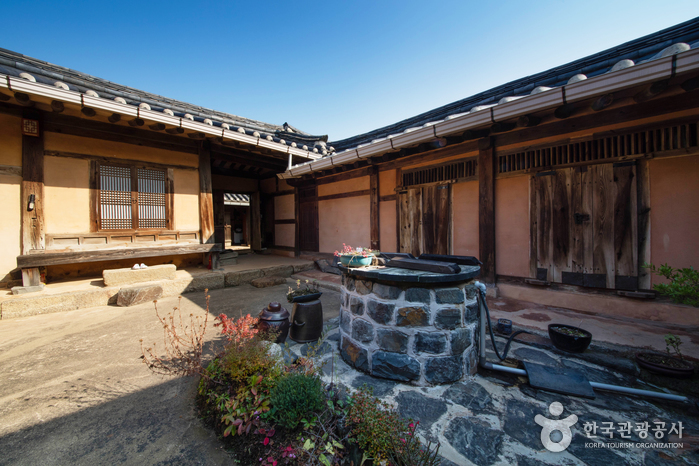Boryeong Eunhaeng (Ginkgo) Village (보령 은행마을)
19.3 Km 2247 2015-01-20
150-65, Oseosan-gil, Cheongna-myeon, Boryeong-si, Chungcheongnam-do
+82-70-7845-5060
In Boryeong-si, Chungcheongnam-do, Boryeong Eunhaeng (Ginkgo) Village is filled with ginkgo trees. It is also called “Cheongna Eunghaeng Maeul” (청라 은행 마을) and “Green Rural Tourism Village” (녹색농촌체험마을).
Upon entering the village, murals can be seen, which are enhanced by ginkgo trees throughout the village, particularly in autumn when they change a dazzling yellow.
The village uses Janghyeon Elementary School, which closed in 1991, as a market place and local experience venue. Permanent hands-on programs and seasonal countryside activities, making a mosaic with ginkgo leaves, and shaking and gathering ginkgo leaves are also available.
Yesan Hwaamsa Temple (화암사 (예산)
19.6 Km 7473 2020-04-04
21-29, Yonggung 1-gil, Yesan-gun, Chungcheongnam-do
+82-41-332-9250
Hwaamsa Temple is located near Joseon dynasty's scholar and writer Kim Jeong-hui's, also referred to his pen name Chusa, house. The temple has ties with the ancient writer, as the temple is known to have been repaired and renovated by Kim Jeong-hui's great grandfather. There are no records that explains the foundation of Hwaamsa Temple, and only a timeline of its reconstruction can be found in "Records of Hwaamsa Temple Restoration" plaque, which is displayed in Sudeoksa Temple Museum. The timeline was recorded by Kim Myeong-hee in 1848, and written by Kim Seong-hee, and carved by Cho Seok-shin. The name "Hwaamsa" was given by King Yeongjo (r. 1724-1776).
Rock-carved Buddha Triad in Yonghyeon-ri, Seosan (서산 용현리 마애여래삼존상)
19.7 Km 37513 2020-03-27
65-13, Maaesamjonbul-gil, Seosan-si, Chungcheongnam-do
+82-41-660-2538
Seosan Maaesamjonbul (Rock-Carved Buddha Triad) is carved into a huge rock
cliff at the entrance to Bowonsa Temple at Gayasan Mountain. The Rock-Carved
Buddha was discovered in 1958, and is considered the oldest and one of the most
outstanding Buddha rock carvings in Korea.
Standing Buddha stands in
the center, the cross-legged Buddha is to the right, and Standing Bodhisattva
is on the left. The main Buddha, Yearaeipsang (Standing Buddha) is 2.8m high.
All sculptures carved in the middle of Baekje (6th century) are called
"Baekje's Smile," named for their trademark bright smiles. The appearance
of the smile changes depending on the direction of the sunlight, so these statues
were designated as National Treasure No. 84. The best time to see the smile
is from 9-11 a.m.
The location, an important site along a key transportation
route from China to Baekje, is on the way to Buyeo from the Taean peninsula.
The masterful work represents the active interchange of culture with China during
that time period.
Birth Home of Queen Jeongsun (정순왕후생가)
20.0 Km 26382 2024-02-22
39 Handari-gil, Eumam-myeon, Seosan-si, Chungcheongnam-do
Birth Home of Queen Jeongsun is the house where Queen Jeongsun (1745-1805), the queen consort of King Yeongjo (1694-1776), the 21st monarch of the Joseon dynasty (1392-1897), lived until she became queen in 1759. It is estimated to have been built in the 17th century and features the architectural characteristics of hanok, with its distinctive "ㅁ" shape and tiled roof.
Gyeam House
20.0 Km 8410 2021-04-09
45, Handari-gil, Eumam-myeon, Seosan-si, Chungcheongnam-do
+82-41-688-1182, +82-10-2376-8273, +82-10-3045-8273
The House of Kim Gi-hyeon (Gyeam Historic House, National Folklore Cultural Heritage 199) is a hanok with over 100 years of history that was established by renovating a nobleman’s house dating from the nineteenth century and equipping it with modern facilities. The Gyeongju Kim clan has lived in the Seosan area, a fertile stretch of land in the middle of the west coast region, for over 600 years. The house has been open to the public since 2010, and attracts many Korean and foreign guests.
The owner renovated the old house by installing a modern bathroom, sink, kitchen and air-conditioning and filling it with antique furniture, and transformed it into a clean and pleasant tourist accommodation with high-class bedding in order to avoid the stereotype about hanok being uncomfortable. In particular, the kitchen has been transformed into a modern facility where guests can enjoy a cup of tea or a meal. The house is also packed with charming features including a small old well equipped with a pump, a wood-burning stove with an iron pot, and a platform for crocks of sauces and condiments.
The House of Kim Gi-hyeon is home to the small Wadang (Roof Tile) Museum, which contains a collection of roof tiles ranging from the Goryeo Dynasty to the Joseon Dynasty. The friendly owners also run a ‘Wadang Rubbing Experience’ program that is popular among foreign tourists and students alike, and strive to provide all their guests with comfort and relaxation and share pleasant moments with them.
The house’s courtyard reflects the beauty of each season, including flower blossoms in spring, colorful leaves in autumn, and a snowy landscape in winter.




 English
English
 한국어
한국어 日本語
日本語 中文(简体)
中文(简体) Deutsch
Deutsch Français
Français Español
Español Русский
Русский